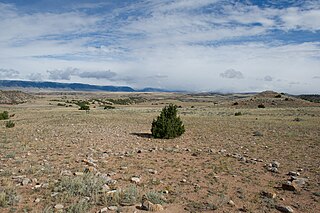
A tipi or tepee is a conical lodge tent that is distinguished from other conical tents by the smoke flaps at the top of the structure, and historically made of animal hides or pelts or, in more recent generations, of canvas stretched on a framework of wooden poles. The loanword came into English usage from the Dakota language and Lakota language.

Medicine Hat is a city in southeast Alberta, Canada. It is located along the South Saskatchewan River. It is approximately 169 km (105 mi) east of Lethbridge and 295 km (183 mi) southeast of Calgary. This city and the adjacent Town of Redcliff to the northwest are within Cypress County. Medicine Hat was the eighth-largest city in Alberta in 2021 with a population of 63,271. It is also the sunniest place in Canada according to Environment and Climate Change Canada, averaging 2,544 hours of sunshine a year.
Crows Nest, Crow's Nest or Crowsnest may refer to:
Parkland often refers to a park.

A wood waste burner, known as a teepee burner or wigwam burner in the United States and a beehive burner in Canada, is a free-standing conical steel structure usually ranging from 30 to 60 feet in height. They are named for their resemblance to beehives, teepees or wigwams. A sawdust burner is cylindrical. They have an opening at the top that is covered with a steel grill or mesh to keep sparks and glowing embers from escaping. Sawdust and wood scraps are delivered to an opening near the top of the cone by means of a conveyor belt or Archimedes' screw, where they fall onto the fire near the center of the structure.

The Wigwam Motels, also known as the "Wigwam Villages", is a motel chain in the United States built during the 1930s and 1940s. The rooms are built in the form of tipis, mistakenly referred to as wigwams. It originally had seven different locations: two locations in Kentucky and one each in Alabama, Florida, Arizona, Louisiana, and California.
Pecten or pectin may refer to:

Churchill Square is the main downtown square in Edmonton, Alberta, which plays host to a large number of festivals and events including: the Edmonton International Street Performers Festival, Edmonton Fashion Week, The Works Art & Design Festival, Taste of Edmonton, Cariwest, and Edmonton Pride.
A tee is an item of sports equipment, used a.o. in golf.
A wigwam is a single-room Native American dwelling.
Teep or teeps may refer to:

Tipi rings are circular patterns of stones left from an encampment of Post-Archaic, protohistoric and historic Native Americans. They are found primarily throughout the Plains of the United States and Canada, and also in the foothills and parks of the Rocky Mountains.

Felled seam, or flat-fell seam, is a seam made by placing one edge inside a folded edge of fabric, then stitching the fold down. The fold encases the raw edges, which protects them from fraying. The fold may be secured with a topstitch or a whipstitch. It is useful for keeping seam allowances flat and covering raw edges.
A hangar is a structure built to house aircraft.
Tee Pee Restaurant was a drive-in restaurant in Indianapolis, Indiana, that began business in 1932. In 1939, the original building on Fall Creek Boulevard was replaced with one having a central stuccoed teepee-shaped section with identical flanking wings. A cantilevered canopy extended around the building. Additions were made to the wings in 1952.

Teepee structures are sedimentary structures interpreted to represent formation in peritidal environments. Teepees are largely the result of evaporation of water and subsequent precipitation of minerals within sediment, resulting in expansion and buckling to form a teepee-like shape. Their name originates from geologists working in the Guadalupe Mountains, who noted their appearance in cross-section resembles that of a Native American teepee.
Indigenous architecture in the United States and Canada emphasizes in contemporary designs the histories of Native Americans in the United States and in Canada. Many indigenous nations have embraced modern architecture styles when constructing new cultural centers, memorials, and museums. However, this modern appearance is molded into designs of great symbolism that demonstrate the building’s connection to countless generations of tradition. Adding accents of traditional architecture to modern buildings is symbolism in itself - it demonstrates how Indigenous peoples define themselves by their culture yet strive to become an increasingly visible part of contemporary society.
This page is based on this
Wikipedia article Text is available under the
CC BY-SA 4.0 license; additional terms may apply.
Images, videos and audio are available under their respective licenses.







